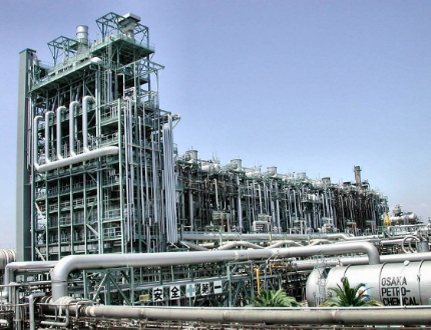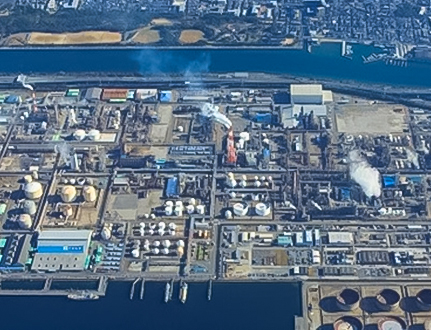The Mitsui Chemicals Group aims to reduce its GHG emissions by 40% by fiscal 2030 relative to fiscal 2013 levels to make important progress toward the goal of achieving carbon neutrality by 2050. This is one of our non-financial targets in VISION 2030. To this end, we have made progress toward achieving our FY2030 GHG emissions reduction target by advancing discussions on several initiatives, including: the consolidation of naphtha crackers within the LLP with Idemitsu Kosan Co., Ltd. in the Keiyo area; the installation of ammonia-fueled crackers at our Osaka Works with aid from Green Innovation Fund*; and the promotion of energy efficiency and the introduction of renewable energy.
We will continue to implement low-carbon and decarbonization measures in sequence. By 2050, in addition to implementing the aforementioned measures, we intend to achieve 80% or more of these reductions mainly through the development of new technologies and the transition of our business portfolio—though this presupposes markets, customers, and other aspects of the external environment falling into place or changing. We also plan to move forward with the development and implementation of carbon-negative technologies, such as carbon capture, utilization, and storage (CCUS), to handle the remaining 20%.
Since fiscal 2019, we have implemented an internal carbon pricing (ICP). By adding internal rate of return (IRR) that takes ICP into account (c-IRR) to our investment decision-making, we are discussing the necessity of investments from the perspective of not only economic opportunities but also a risk that environmental impact may increase in the future. As a measure to accelerate our strategy, we revised our ICP from 3,000 yen/tCO2e to 15,000 yen/tCO2e in fiscal 2022.



